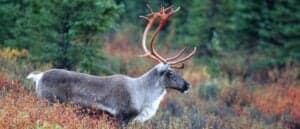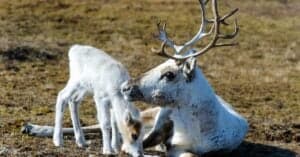Looking to know more about the world’s largest reindeer herds? Then you’ve come to the right place. In this blog post, we’ll tell you all you need to know about the Taimyr reindeer herd — the largest in the world — and show you other prominent reindeer herds scattered throughout the globe. We’ll also delve into why some species and subspecies of these majestic animals are endangered and in considerable decline.
The Taimyr Reindeer Herd
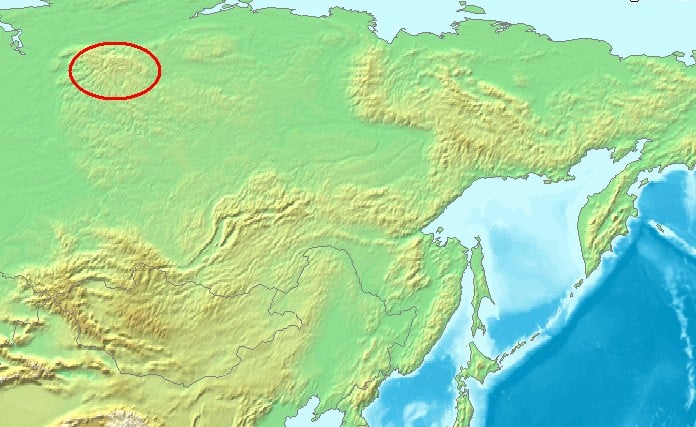
The largest herd of
reindeer
in the world is the Taimyr reindeer herd, which roams the Putorana Mountains in Russia.
©Michiel1972/Wikimedia Commons – License
The Taimyr reindeer herd is the largest in the world, having had as many as 1,000,000 reindeer in 2000. However, in recent years, this number has decreased significantly. In 2006, the herd went from having 1,000,000 reindeer to 700,000, and then, in 2009, 600,000. Unfortunately, these numbers are still decreasing, and the herd is now composed of 400,000 animals, although it is still the largest in the world.
The herd is located in the tundra of Northern Siberia, near the frozen Kara Sea. The reindeer of the Taimyr herd migrate up to 1,000 km each year in search of new pastures. Due to climate change, the tundra’s vegetation cover is decreasing, which means less food for the reindeer. To cope with this increasingly harsh environment, the reindeer have adapted by becoming smaller and faster. However, this has also led to a decrease in their reproductive capacity.
Why Is the Herd Shrinking?

Reindeer are under threat for a number of factors, and these have led to the shrinking of the Taimyr reindeer herd, as well as the world’s reindeer population as a whole.
Reindeer are increasingly under threat due to several factors, most notably poaching and climate change. Poaching is a significant problem because it is causing a decline in the reindeer population. Hunters are targeting larger animals for more meat, leaving smaller animals vulnerable.
Climate change is also having a detrimental impact on reindeer, as the Arctic is warming at a faster rate than other areas. As temperatures rise, ice melts, making it difficult for reindeer to survive. In addition, extreme weather events, such as storms and droughts, make it difficult for reindeer to find food. Reindeer need a stable environment to survive, and climate change creates unpredictable weather patterns that prevent them from finding sufficient food sources.
Reindeer are an essential part of the Arctic ecosystem, and it is critical that we work to protect them from poaching and climate change to ensure their long-term survival.
How Important Are Reindeer in Siberia?

A female reindeer with her calf in the springtime.
©iStock.com/Artpilot
Reindeer are an important part of life in Siberia, especially as a source of food and clothing. The nomadic people of Siberia depend on these animals for their survival, as they are an essential source of meat, fur, and milk. Reindeer are also a means of transportation, as they can be harnessed and used for riding and packing.
They also play a crucial role in traditional Siberian celebrations. During the year-end holidays, families often gather to feast on reindeer meat and enjoy a traditional story told by a loved one. The stories of Santa Claus and his sleigh, which are believed to have originated in Siberia, also center on reindeer. These animals are, therefore, an indispensable part of life in this region.
Other Large Reindeer Herds
Porcupine Caribou
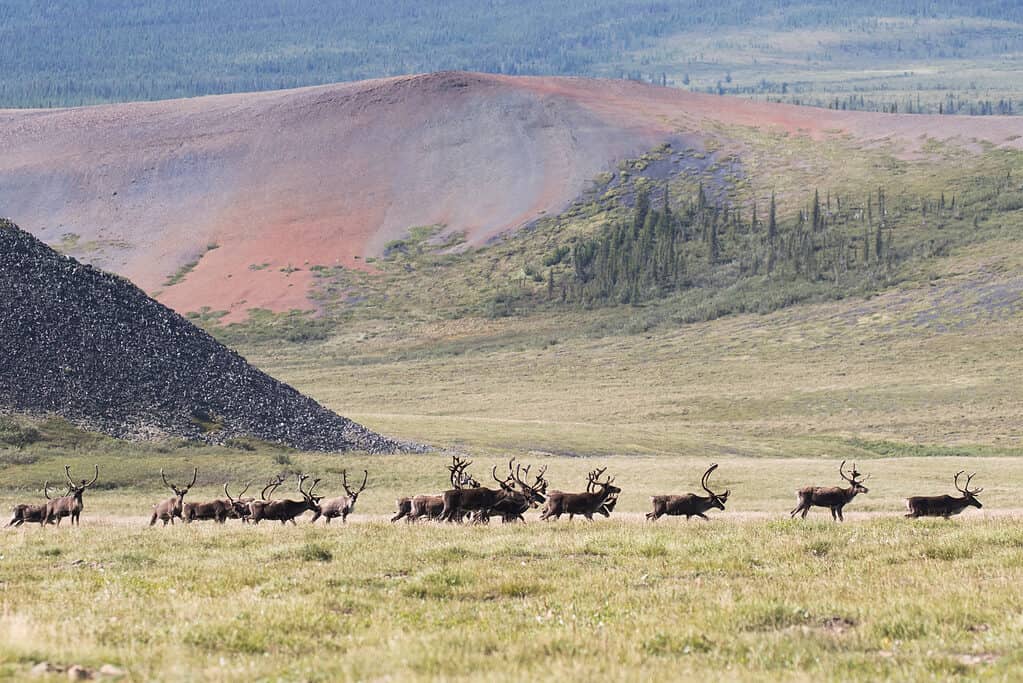
The
Porcupine
caribou herd is a large herd of caribou that roams a section of the Yukon territory of Canada.
©Jukka Jantunen/Shutterstock.com
The Porcupine caribou herd is one of the largest caribou herds in North America. It is also one of the most studied herds in the world, thanks to its proximity to major research facilities such as the International Polar Bear Cave.
Unfortunately, in recent years, the Porcupine caribou herd has suffered a widespread decline in numbers due to increased predator attacks and increased human activity in their habitat. However, recent efforts to restore the habitat and strengthen protection measures have led to a modest rebound in herd numbers in recent years, reaching 218,000 animals. With continued efforts to protect this herd, we can help restore balance to the delicate ecosystems of the north.
George River Herd

Reindeer
©Dean Biggins – Public Domain
The George River reindeer herd was once the largest in the world, composed of as many 900,000 reindeer. However, the size of the herd has declined significantly in recent years, now numbering only 74,000.
Locals blame the expansion of massive industrial projects in the area for this decline. These projects include roads, pipelines, and other significant developments, and many believe these changes have had a negative impact on the herd. As a result, many are calling for more protection for the George River herd and its habitat.
Sámi Reindeer Herd (Norway)
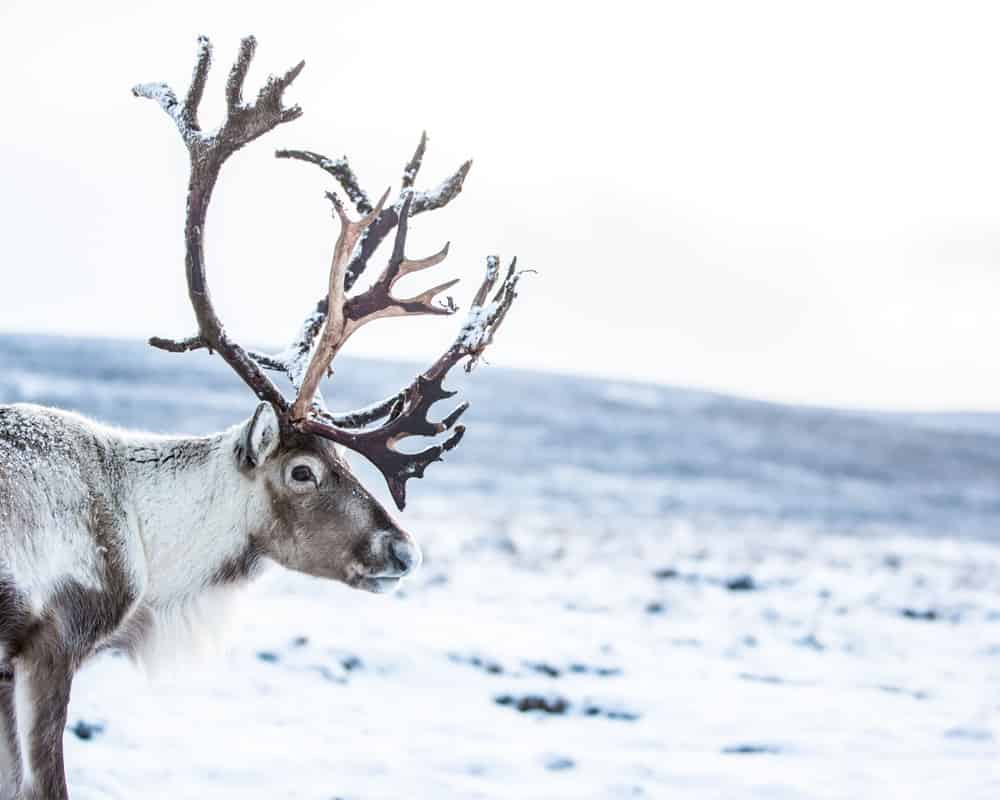
Reindeer looks off to the right with a snowy background
©Rezu_07/Shutterstock.com
Reindeer herding is an important economic activity in Norway, generating more than 100 million NOK yearly. It also provides essential social and cultural values to the Sámi people, who have practiced this way of life for thousands of years. These people treasure reindeer for their meat, milk, hides, antlers, and traction ability.
Reindeer herding is also a valuable means of transportation for the Samis, who traditionally used reindeer sleds to travel across the tundra. In recent years, there has been an increasing emphasis on ecotourism in reindeer herding areas. Many Sámi villages have become destinations for visitors interested in learning about traditional Sami culture. As interest in reindeer herding grows among both Sámi and non-Sámi, it is vital to ensure that this traditional form of livelihood remains sustainable in the face of increasing pressures from anthropogenic impacts, such as climate change and habitat loss.
The photo featured at the top of this post is © Karl Weller/Shutterstock.com
Sources
- British Broadcasting Corporation, Available here: https://www.bbc.com/news/science-environment-38297464
- Discover Silversea, Available here: https://discover.silversea.com/destinations/russian-far-east/eveny-people-russian-far-east/
- Government of Northwest Territories Environment and Natural Resources, Available here: https://www.enr.gov.nt.ca/en/services/caribou-de-la-toundra/porcupine-herd
- Guernica, Available here: https://www.guernicamag.com/joanna_eede_christmas_reindeer/
- The Siberian Times, Available here: https://siberiantimes.com/ecology/casestudy/features/f0285-how-poaching-is-killing-off-the-worlds-largest-reindeer-herd-on-taimyr-peninsula/
Thank you for reading! Have some feedback for us? Contact the AZ Animals editorial team.



